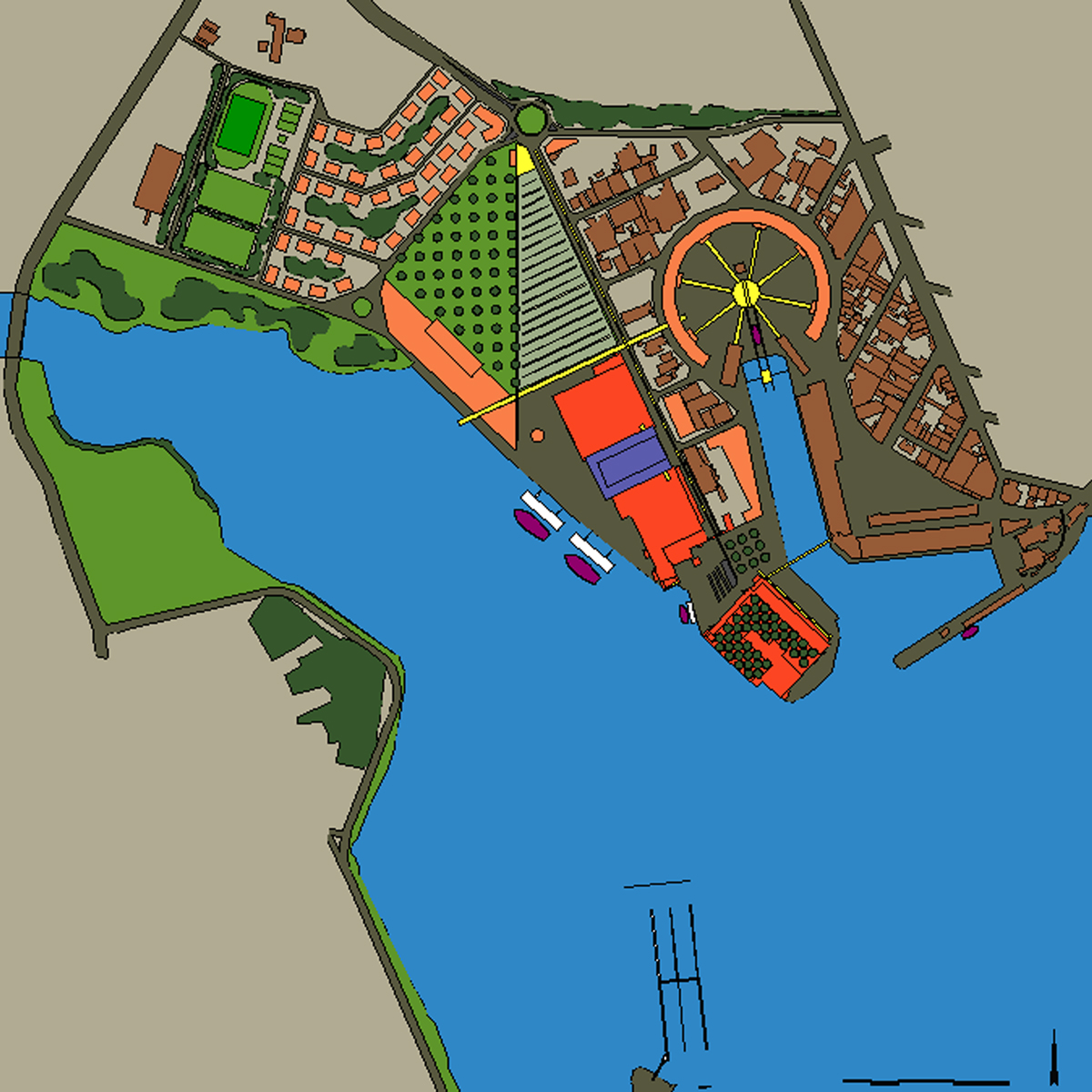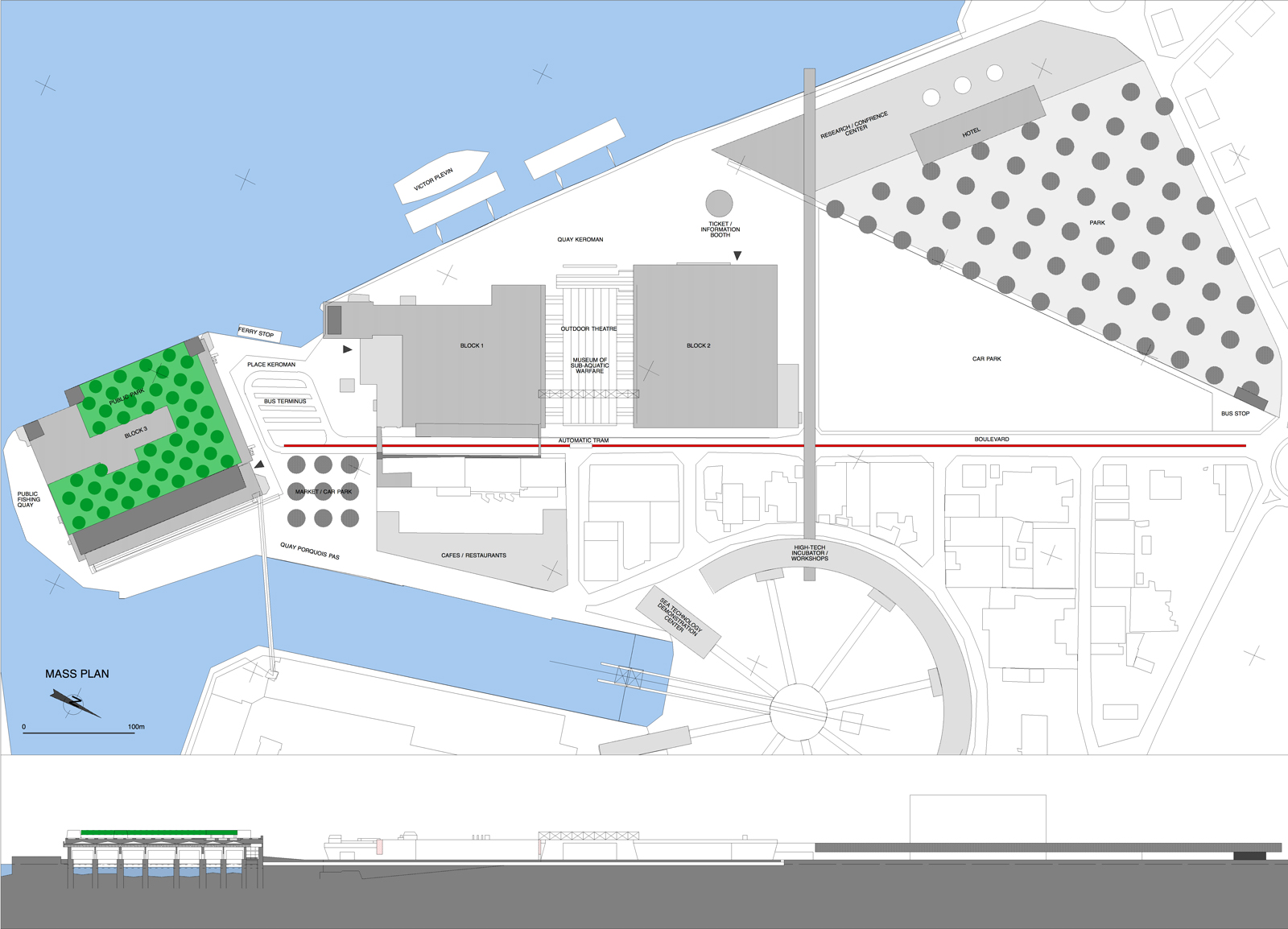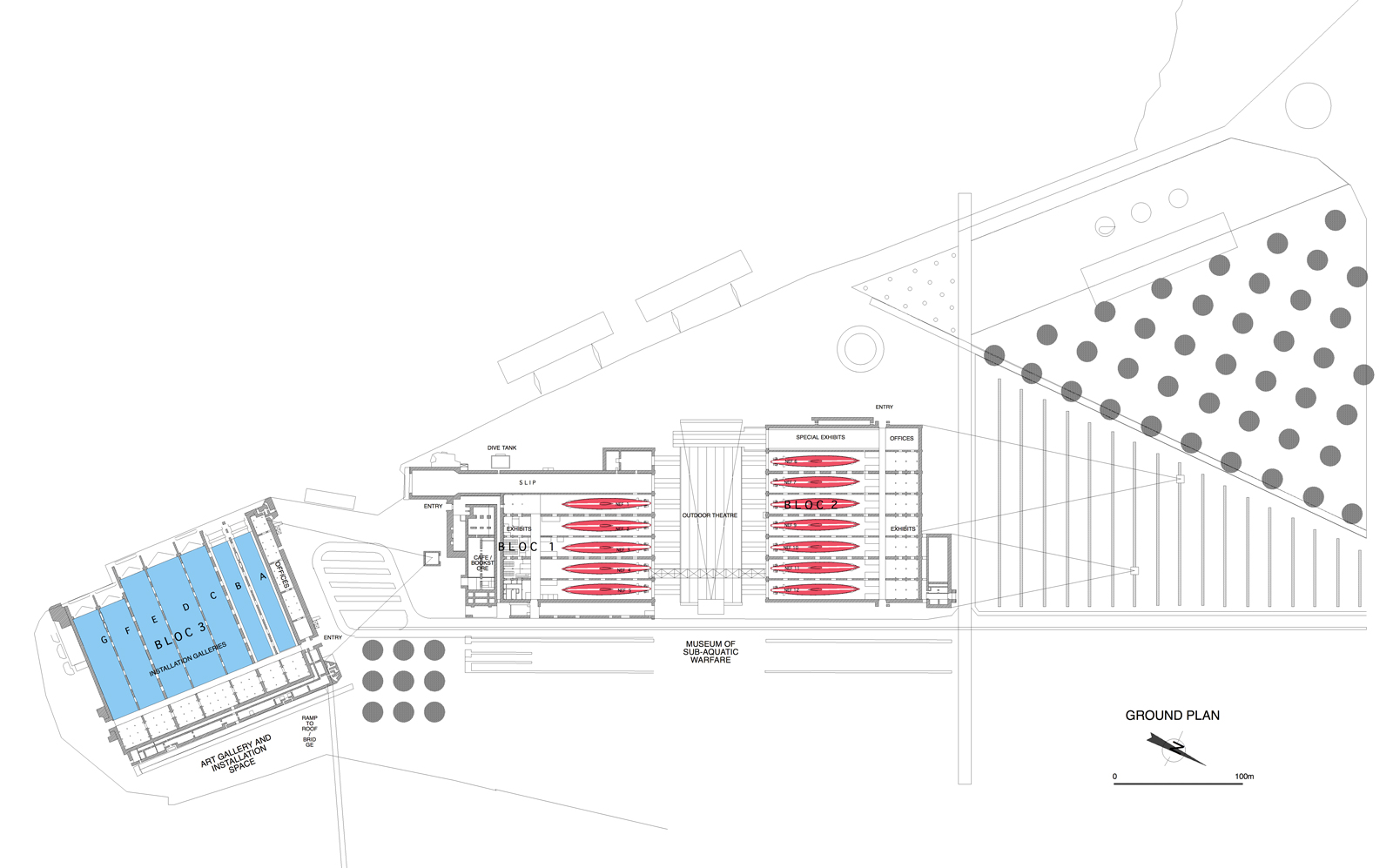The space of the former submarine base will be opened to the public in the true public sense, and all commercial/industrial uses will be transferred elsewhere. This will allow, and naturally encourage, public access to the water's edge and uninterrupted circulation along the waterfront. The bunkers will house functions that take advantage of the architectural and mnemonic power of these structures. New symbiotic economic engine will drive revitalization of the fishing port. Green space will give definition to the edge of the river Ter. Multi-modal transportation links to the larger surrounding region will be established.
A number of existing buildings and roads will be removed to "erase" the unnecessary fabric and facilitate new development. New buildings will be strategically inserted in order to re-define space and where they are functionally needed. Development zones will be created with a set of design guidelines for future growth and potential private development. Nodal connections will be set up to establish links with the surrounding region, both spatially and through transportation.

A diagonal running from the traffic circle will define entry to the site by land. It will set up a view of the bunkers as the terminus of the arterial road system.
Rue Dordelin and Avenue du Commendant L’Herminier will be combined into a boulevard that will draw people to a new plaza at the water’s edge. This plaza will serve a variety of functions - access to the park, terminus of the bus system, link to the ferry service, and entry to the Keroman bunkers.
A public park will be created on the roof of Bunker 3 at the water’s edge.
East-west links to the port will be created by removing existing buildings from the plaza and by providing a pedestrian connection to the north of the bunkers.

Our goals in developing a new program for the bunker buildings are to avoid treating them as generic space; to take advantage of their powerful physical presence and unique interior spatial qualities; and to acknowledge, rather than deny, their history.
Removal of surrounding “parasite” buildings and landscape elements will reveal the true scale of the bunker blocks.
Although specific functions will be assigned to the buildings, the program will allow for multiple and relatively open-ended uses.
Bunker 3, due to its location on the site and its position relative to the other two blocks, will house a special function - an art center where artists from all over the world will be invited to create monumental installations that will remain on view for extended periods of time. The roof of the building will be developed as a public park that at night can also be used for concerts and other public events.
Bunkers 1 and 2 will jointly house the Museum of Sub-Acquatic Warfare. The “Strosskopf” area between the two buildings will be used as an open-air theater, while the north wall of Bunker 2 can also be used for film projections, much like a drive-in cinema.

Lorient Submarine Base
Lorient, France